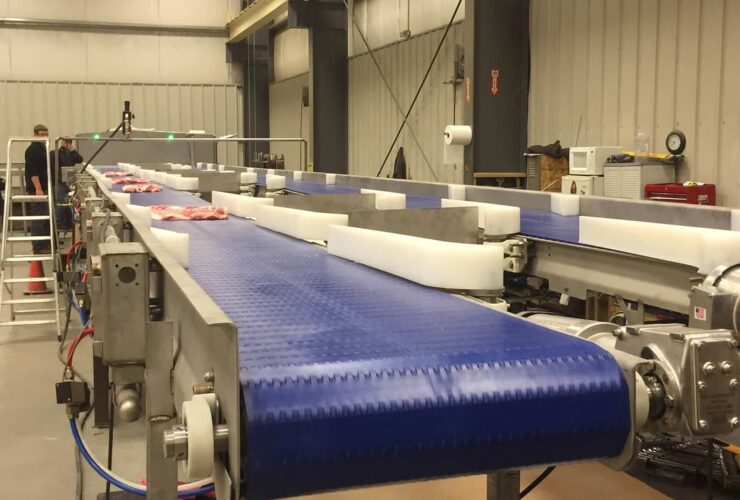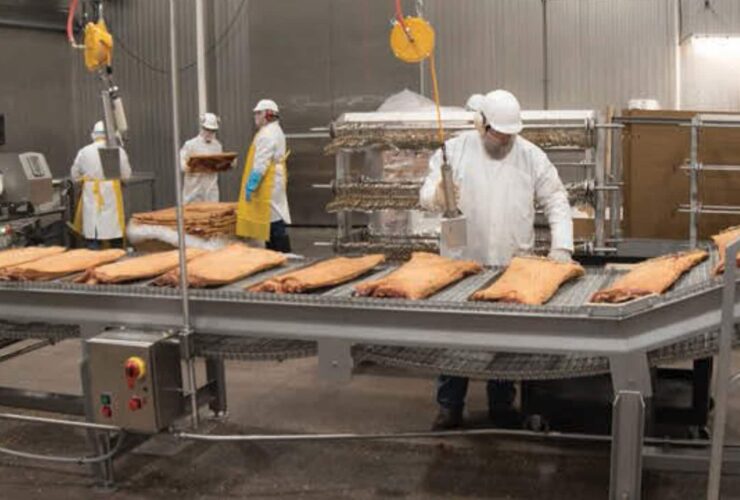Sanitary conveyor design is a huge concern for most food processing companies — especially when it comes to conveyors that move unpackaged product from one workstation to the next.
Ensuring the conveyor purchased is designed to eliminate bacteria-harboring points, is easy to clean, and reduces the risk of product contamination reduces the risk of a costly product recall, and keeps customers safe.
Sanitary Conveyor Design Features
But how do you know if a sanitary conveyor really is sanitary? We put together a list of the top 7 features that need to be included on a conveyor in order for it to be considered sanitary.
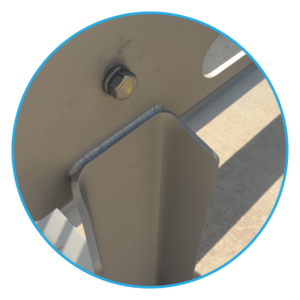
TIG Welds
TIG welds are required on all food processing equipment as they prevent bacteria from harboring in weldment areas.
TIG welding has a tighter bead, is more controllable, and results in a smaller weld. Bulkier welds can produce nooks, crannies, and fractures where bacteria can grow and fester during use and pose a food safety issue.
When sanitation is a concern, the goal is to create welds that are smooth — without any buildup, undercuts, burrs, nooks, crannies, or fractures.
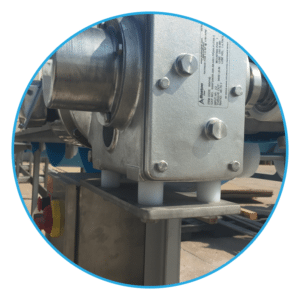
Stand-Offs and Spacers
Bacteria loves to hide where metal rests on metal and is not welded together — components like motors, gearboxes, and the like.
To prevent bacteria growth, sanitary conveyors should include UHMW stand-offs and spacers to prevent metal-on-metal contact between the various components and framework of the conveyor.
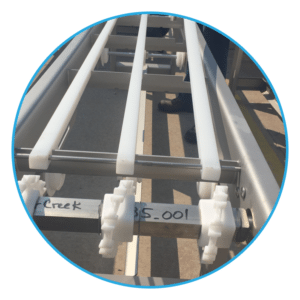
Pivoting Captured Carryways
Belt conveyors require carryways to ensure the belt operates correctly, but when carryways are permanently captured to the frame, they can create pockets of bacteria growth.
Some manufacturers opt for removable carry ways to allow for easy cleaning, but that poses a maintenance issue. Any time a component part can be completely removed is an opportunity for it to get lost or broken.
Pivoting captured carry ways solves both problems: the carry way is permanently fixed on one end to ensure proper placement and that it doesn’t get misplaced or lost. The pivoting feature allows you to easily lift the carry for cleaning and maintenance.[/av_three_fourth]
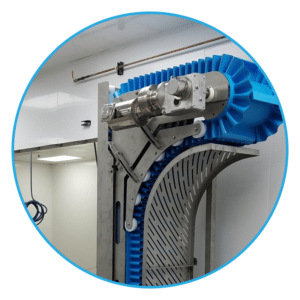
Tool-less Belt Removal
Bacteria can easily harbor in the area under the conveyor belt, making it a prime area that needs to be regularly cleaned — but on most conveyors can prove to be a long and difficult process.
The ability to quickly and easily remove the conveyor belt, without the need for special tools or parts that are easily misplaced or lost, will aide in the cleaning process and give you peace of mind that your cleaning crew is cleaning under the belt.
Look for a conveyor that offers a tool-less belt removal system.
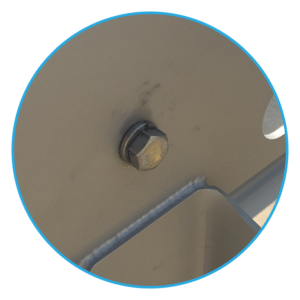
Minimized Fastener Use
Any form of non-welded fastener, such as bolts, create a metal-on-metal surface where bacteria can harbor.
While there are some instances where fasteners are unavoidable, especially in the case of options that need to be changed out, you should always look for a conveyor that uses minimal fasteners to reduce the risk of bacteria. The less metal-on-metal contact, the better.
[/av_three_fourth]
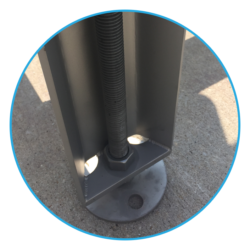
Under Bent Channel Frame
Flat spots in the frame of any conveyor provide a space for water and product to sit, which in turn gives bacteria a place to harbor. It’s why AMI Sanitary Design Requirements recommend little to no horizontal or flat surfaces.
Channel frame that is under bent eliminates flat spots in the conveyor framework so no water or product is able to pool in one place and harbor bacteria.
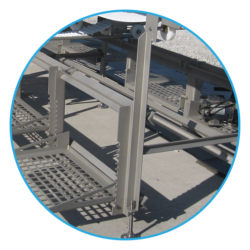
Angle Frame
Tube frame gives bacteria harboring points as well as dark spaces to grow quickly — and is incredibly hard to clean correctly to kill all bacteria.
Always look for a conveyor with open architecture on the framework. It eliminates bacteria-harboring points and makes the cleaning process easier and more efficient.
Investing in Sanitary Design
Sanitary design is an investment in the future of your company and the safety of your product — and no place is more important for sanitary design than the conveyors in your facility.
The design features above should be considered non-negotiable when it comes to equipping your facility with a sanitary conveyor system, both for your bottom line and the safety of your customers.



